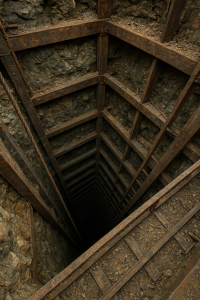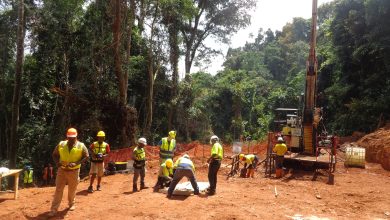
The case for repurposing South Africa’s 6,000 abandoned mines
South Africa urgently needs to explore new solutions to repurposing abandoned mines, as the presence of some 6,100 abandoned mines across the country are endangering surrounding communities and risk inflicting long-term environmental harm.
While mines have a legal responsibility to prepare for a future site-closure and rehabilitate the mine when the mine is decommissioned, many lingering challenges plague local communities for decades after. Instead of general or standard rehabilitation, which often leaves behind a multitude of issues, Jaco Viljoen, Project Director at specialist underground engineering and construction firm TDS Projects Group, suggests repurposing abandoned mines.
“We can’t ignore that these mines can become hazardous if left to decay. But instead of simply closing them off, there’s a tremendous opportunity to convert them for other uses, be it for power generation, storage, and transmission, sewage treatment, subterranean storage, agricultural initiatives, or tourism,” he explains.
“Ultimately, it’s an opportunity to revitalise what would otherwise be wasted space, generate income, and advance government’s mine rehabilitation and general environmental goals.”

Opportunities to develop long-term sustainable projects
Under current legislation, companies are required to reserve funds for the rehabilitation of land once mining activities cease. This generally ensures that the site is made safe and environmentally stable, reducing risks to surrounding ecosystems. However, repurposing as an advanced strategy goes much further, seeking to maximise socio-economic benefits by designing and building new use cases into these underground labyrinths.
Rather than simply sealing off a decommissioned mine or leaving it to deteriorate, forward-thinking developers and mining houses can collaborate with engineering and construction companies such as TDS Projects Group to transform the site. The advantages are clear: repurposed mine projects benefit from existing tunnels, shafts, and structural frameworks that would be prohibitively expensive to dig and erect from scratch.
Viljoen notes that old mine shafts typically provide the depth, stability, and pre-built access points needed for specialised projects like underground utilities or concealed power lines. For municipalities, the promise of secure infrastructure better isolated from harsh weather, vandalism, or large-scale disruptions below the surface can be highly appealing.
Underground tunnels can further host climate-controlled hydroponic agriculture, unlocking year-round production of fresh produce. Vertical spaces can be adapted into pump storage hydropower facilities to stabilise local electricity grids, and subterranean reservoirs can safeguard water in drought-prone areas.
For private firms, the unique layout of a mine might open profitable investment opportunities, such as data centres that utilise the naturally cooler subterranean climates to reduce energy costs. Other possibilities include underground agricultural systems, hotels, and even adventure parks. Some projects abroad, such as the Salina Turda Underground Amusement Park in Romania, have seen significant success in this regard.
Implementing engineering solutions early-on
Pioneering these types of transformations requires considerable engineering expertise. In Viljoen’s view, the key to success lies in meticulous long-term planning well before the mine is due to close. “Preparing a shaft for future use is easiest when done while the mine is still operational. Companies often wait until the end of a mine’s lifecycle to direct their focus to decommissioning, but incorporating engineering solutions earlier in the process can drastically reduce long-term costs and timelines. Then, once mining ceases, the site can easily transition toward a new function.”
To achieve this, he notes that a few key infrastructure elements must be addressed in partnership with expert engineers and construction professionals. For example, ventilation solutions are often critical to these projects, ensuring adequate airflow for any planned development underground. Water management, particularly if the site is earmarked for water-intensive operations like agriculture or energy generation, can also be optimised by harnessing pumping stations, installing secure sump chambers, and safeguarding existing tunnels from contamination.
Furthermore, structural enhancements, such as reinforcing rock bolts, installing extra bracing, or upgrading passageways, can ensure that the repurposed mine complies with modern safety codes and operates without endangering workers or visitors.
“Ultimately, we have an opportunity to transform what are seen as liabilities into assets that can benefit local communities through stimulating job creation and new businesses in often remote regions.
“The key, however, is collaboration. If mining houses, local and national government, and engineering firms work together to identify innovative solutions to this growing problem, the results could breathe new life into underground spaces well after the last load of ore has been extracted, Viljoen concludes.






